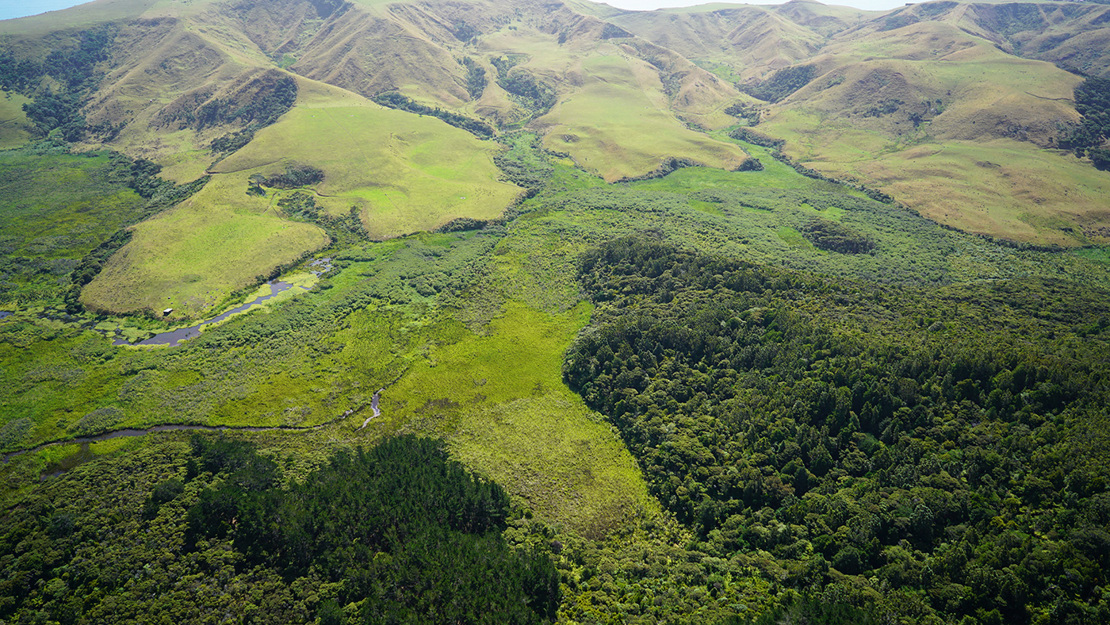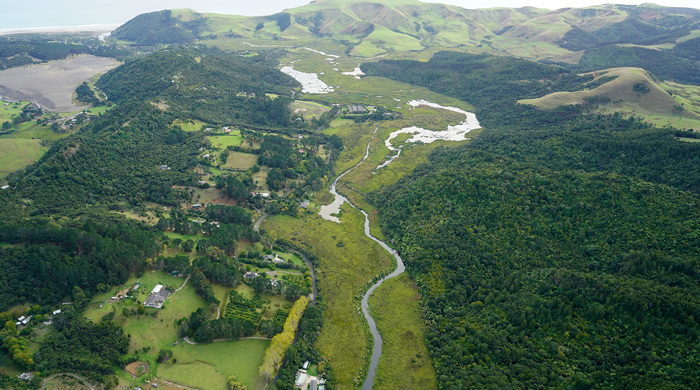Te Henga Wetland
The Te Henga Wetland is the largest freshwater swamp on Tāmaki Makaurau / Auckland’s mainland. The wetland provides vitally important habitat for threatened species such as matuku-hūrepo (Australasian bittern).
Size: 168 hectares
Area description
The Te Henga Wetland biodiversity focus area is the largest freshwater swamp on the mainland in Tāmaki Makaurau / Auckland. Situated on the west coast in the Te Henga valley, the swamp covers the lower sections of the Waitākere River and Mokoroa Stream.
A mosaic (mix) of raupō, rushes and sedges with scattered cabbage trees and flax is found here with a rich diversity of plant species. The swamp habitat supports important populations of several threatened wetland bird species.
Although there are threats to be managed, Te Henga Wetland is of national biodiversity significance given the:
- size of the wetlands
- ecosystem quality and diversity
- species diversity
- importance of Te Henga as a stepping-stone in the wider landscape.

Key ecosystems
Cabbage trees, flax and mānuka are found scattered along the edges of the swamp and on small islands. There are patches of kuta and swamp millet. Other patches are dominated by Machaerina species (WL11) and large areas of raupō reedland (WL19). Several threatened plant populations have been recorded here.
The surrounding landscape is a complex mix of native forest and regenerating scrub, grazed farmland, extensive sand dunes downstream at Te Henga beach and nearby freshwater lakes.

Native fauna
The wetland habitat supports a diverse range of native birds including:
- mātātā (fernbird)
- koitareke (marsh crake)
- pūweto (spotless crake)
- mioweka (banded rail)
- one of Auckland’s largest matuku-hūrepo (Australasian bittern) populations.
Matuku-hūrepo are under threat of extinction due to the extensive loss of their wetland habitat and ongoing pressures such as predation. Their national population has sharply declined. This species is now ranked as Nationally Critical (the same threat level as kākāpō).


Community action
The community is involved in ecological restoration projects in the local area including:
- Matuku Link
- Habitat Te Henga
- Matuku Reserve
- Ark in the Park.
Restoration activities include animal pest control, weed control, restoration planting, and advocacy and education. Reducing predator numbers benefits native species including wetland birds.
The recent reintroduction of pateke (brown teal) to Te Henga wetland was possible thanks to the ongoing management of animal pests here.



